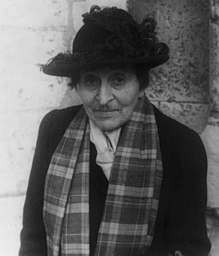
Gertrude Stein was an American novelist, poet, playwright, and art collector. Born in Allegheny, Pennsylvania, and raised in Oakland, California, Stein moved to Paris in 1903, and made France her home for the remainder of her life. She hosted a Paris salon, where the leading figures of modernism in literature and art, such as Pablo Picasso, Ernest Hemingway, F. Scott Fitzgerald, Sinclair Lewis, Ezra Pound, Sherwood Anderson and Henri Matisse, would meet.

André Derain was a French artist, painter, sculptor and co-founder of Fauvism with Henri Matisse.

Alice Babette Toklas was an American-born member of the Parisian avant-garde of the early 20th century, and the life partner of American writer Gertrude Stein.
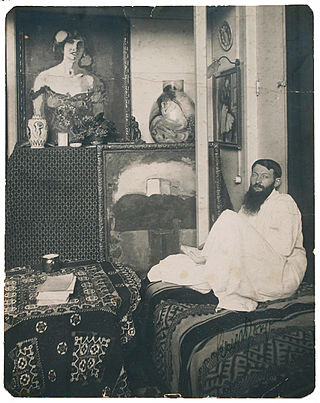
Cornelis Theodorus Maria "Kees" van Dongen was a Dutch-French painter who was one of the leading Fauves. Van Dongen's early work was influenced by the Hague School and symbolism and it evolved gradually into a rough pointillist style. From 1905 onwards – when he took part at the controversial 1905 Salon d'Automne exhibition – his style became more and more radical in its use of form and colour. The paintings he made in the period of 1905–1910 are considered by some to be his most important works. The themes of his work from that period are predominantly centered on the nightlife. He painted dancers, singers, masquerades, and theatre. Van Dongen gained a reputation for his sensuous – at times garish – portraits, especially of women.
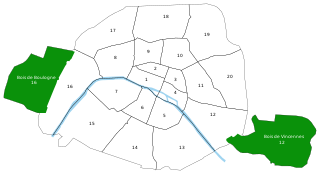
Rive Gauche' is the southern bank of the river Seine in Paris. Here the river flows roughly westward, cutting the city in two parts. When facing downstream, the southern bank is to the left, whereas the northern bank is to the right.

Waiting for the Moon is a 1987 internationally co-produced drama film starring Linda Hunt, Linda Bassett, Bernadette Lafont, Bruce McGill, Jacques Boudet and Andrew McCarthy. The film was written by Mark Magill and directed by Jill Godmilow.
William Edwards Cook was an American-born expatriate artist, architectural patron, and long-time friend of American writer Gertrude Stein. Following his 1903 departure from the U.S., Cook resided in Paris, Rome, Russia, and on the island of Majorca, in the Balearic Islands off the eastern coast of Spain. Today he is chiefly remembered not for his artistic achievements, but because, during World War I, he taught Stein to drive an automobile so that she could contribute to the French war effort, and because, in 1926, he commissioned the Swiss architect Le Corbusier to design an innovative cubist home, on the outskirts of Paris, now called Maison Cook or Villa Cook.

Mildred Aldrich (1853-1928) was an American journalist, editor, writer and translator. She spent her early career as a journalist and editor in Boston before moving to Paris, where she continued working as a foreign correspondent and translator. In 1914, shortly before the start of World War I, she retired to a house in the French countryside overlooking the Marne River valley. She published a novel and four accounts of her life based on collections of her letters written during the war years. In 1922, she was awarded the French Legion of Honour in recognition of her assistance to soldiers and refugees, and the influence her books apparently had in persuading the United States government to declare war on Germany.
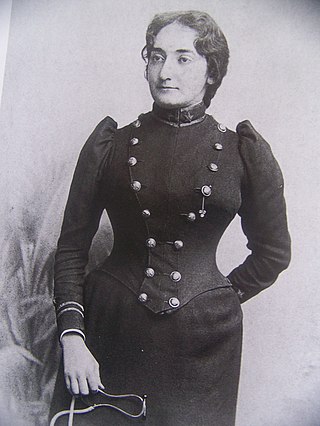
Claribel Cone (1864–1929) and Etta Cone (1870–1949), collectively known as the Cone sisters, were active as American art collectors and socialites during the first part of the 20th century. Claribel trained as a physician and Etta as a pianist. Their social circle included Henri Matisse, Pablo Picasso and Gertrude Stein. They gathered one of the best known private collections of modern art in the United States at their Baltimore apartments, and the collection now makes up a wing of the Baltimore Museum of Art. Their collection was estimated to be worth almost a billion US dollars in 2002.

Harriet Lane Levy was a California writer best known for her memoir, 920 O’Farrell Street. Levy was also an avid art collector, a childhood friend of Alice B. Toklas, and an acquaintance of Gertrude Stein.
Mary A. Bookstaver (1875–1950) was a feminist, political activist, and editor, widely known by the nickname "May." Daughter of Judge Henry W. Bookstaver and Mary Baily Young, she attended Miss Florence Baldwin's School and graduated from Bryn Mawr College in 1898 in history and political science. After graduation she moved to Baltimore, Maryland, where she was part of a circle of lesbian Bryn Mawr graduates, including Bookstaver's lover, Mabel Haynes. Gertrude Stein, then a Johns Hopkins University School of Medicine student, became infatuated with Bookstaver, who found Stein's naïveté literally laughable, but introduced Stein to physical love. The experience made a deep impression on Stein, whose first novel, QED, completed in Baltimore in 1903, was an autobiographical account of this love triangle, with Bookstaver's character named "Helen Thomas."
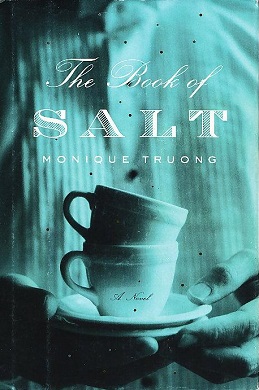
The Book of Salt is a 2003 debut novel by Vietnamese-American author Monique Truong.
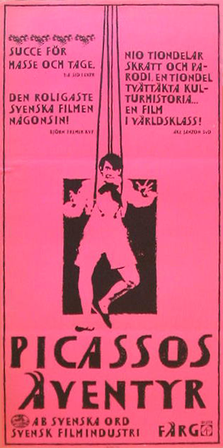
The Adventures of Picasso is a 1978 Swedish surrealist comedy film directed by Tage Danielsson, starring Gösta Ekman, as the famous painter. The film had the tag-line Tusen kärleksfulla lögner av Hans Alfredson och Tage Danielsson. At the 14th Guldbagge Awards it won the award for Best Film.
Diana Souhami is an English writer of biographies, short stories and plays. She is noted for her unconventional biographies of prominent lesbians.
In 1935, Spanish artist Pablo Picasso, 53, temporarily ceased painting, drawing, and sculpting in order to commit himself to writing poetry, having already been immersed in the literary sphere for years. Although he soon resumed work in his previous fields, Picasso continued in his literary endeavours and wrote hundreds of poems, concluding The Burial of the Count of Orgaz in 1959.

27 rue de Fleurus was the home of the American writer Gertrude Stein and her partner Alice B. Toklas from 1903 to 1938. It is in the 6th arrondissement of Paris on the Left Bank. It was also the home of Gertrude's brother Leo Stein for a time in the early 20th century. It was a renowned Saturday evening gathering place for avant-garde artists and writers, notably Pablo Picasso and Ernest Hemingway.
Writers in Paris in the 1920s refer to the American expatriate writers in Paris in the 1920s. They created literary works and movements that influence the global literary landscape to date. During the 1920s, political, economic, and social issues shaped the inspiration behind many of the writers in Paris. The American writers in Paris in the 1920s are referred to as the Lost Generation.

Gertrude and Alice is a 1991 book about Gertrude Stein and Alice B. Toklas by English biographer Diana Souhami.

The French Collection is a series of twelve quilt paintings by American artist Faith Ringgold completed between 1991 and 1997. Divided into two parts composed of eight and four quilts each, the series utilizes Ringgold's distinct style of story quilts to tell the fictional story of a young African American woman in the 1920s, Willia Marie Simone, who leaves Harlem for Paris to live as an artist and model. The stories, illustrated in acrylic paint and written in ink surrounding the paintings, narrate Willia Marie's journey as she befriends famous artists, performers, writers, and activists, runs a café and works as a painter, and develops a distinct Black feminist intellectual worldview based on her experiences and identity. Willia Marie's interactions with notable modernist artists and their oeuvres are an archetypical example of Ringgold's responses to the predominantly white male artistic canon, wherein she often directly invoked, embraced, and challenged the central figures of modernist art.

The Closerie des Lilas is a famous Parisian restaurant located on the Boulevard du Montparnasse in the 6th arrondissement of Paris. It was opened in 1847 by François Bullier and was a simple brasserie at the beginning. Initially, it was named after a theatre piece called La Closerie des Genets by Frédéric Soulié. It progressively evolved into the Closerie des Lilas because its owner, Bullier, used to plant lilac flowers.

